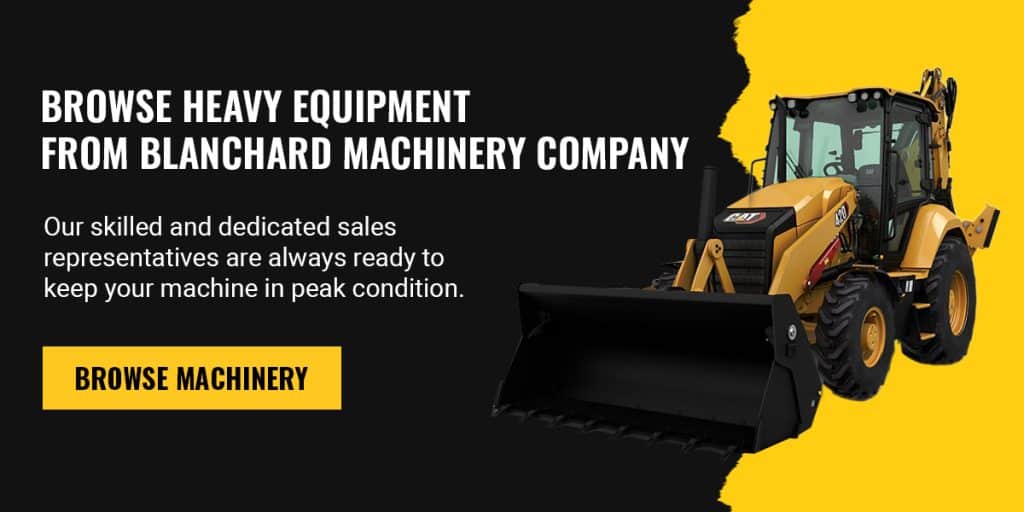
Join the Blanchard Team..
Apply Now
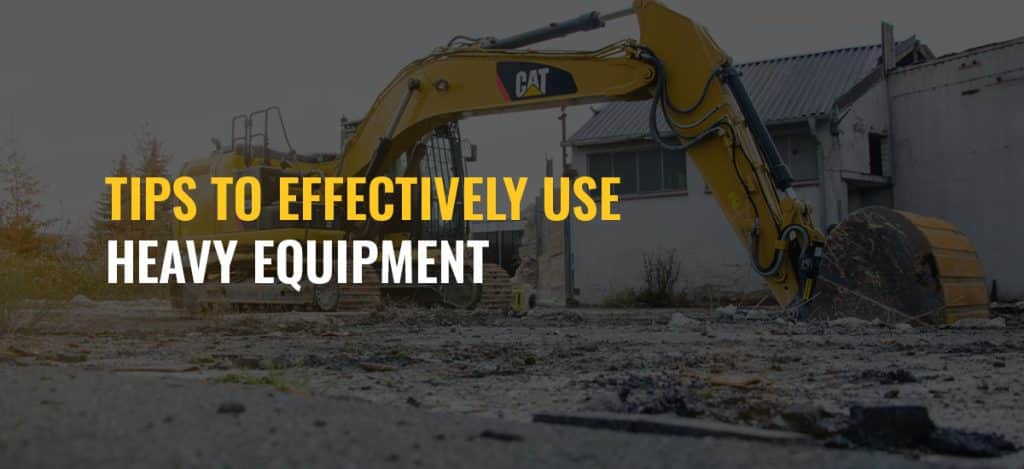
If you operate or maintain heavy equipment, you know the challenges of meeting deadlines, managing complex machinery and keeping your crew safe. You need your equipment to work efficiently and safely so you can minimize downtime. From construction sites to mines and every industry in between, the demands on you and your machinery are high. Using machinery correctly improves its performance, extends its life span, reduces the risk of accidents and keeps you within your budget.
This post provides tips on how to effectively use heavy equipment.
Here’s why proper equipment usage matters:
Operators must undergo training to use heavy equipment. Without proper training, employees may unknowingly misuse equipment or not recognize hazardous situations. Proper training helps reduce employers’ liability and promotes a safer workplace.
Machinery and jobsites differ, so employers should develop comprehensive training materials tailored to their equipment and projects. This helps employees develop expertise that directly benefits their daily work. Ideally, programs should combine classroom instruction and hands-on practice.
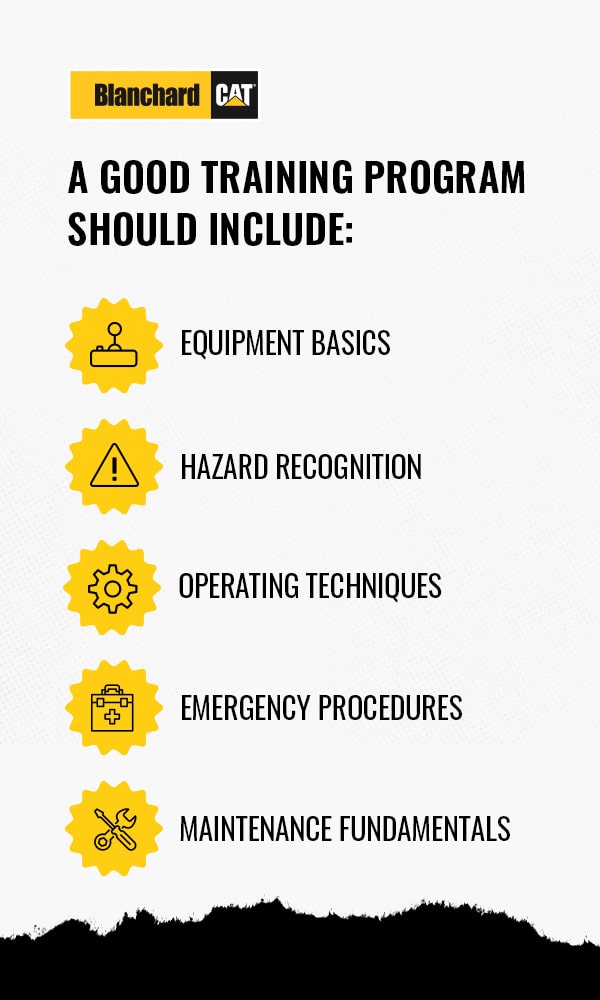
A good training program should include:
Over time, operators may forget certain procedures, or someone may observe them using equipment unsafely, so refresher courses may be needed. Additionally, technology and regulations evolve. Keeping up with these changes is critical for secure and practical operations.
Refresher training helps employees:
Here’s what maintenance entails and how to implement it.
Manufacturers design equipment with specific guidelines for optimal performance and longevity. These include maintenance schedules, part replacement intervals and operating procedures. Ignoring these recommendations may lead to premature wear. Keep manuals accessible, follow the prescribed schedules, and use only approved parts and supplies. Train your team on these requirements to keep everyone on the same page.
Each machine has unique components that require inspection. Tailored checks catch potential problems before they become major issues. Develop a checklist for each type of equipment and have employees perform daily pre- and post-use inspections.
Records help you track what’s been done, when it was done and when the next service is due. They are also invaluable for warranty claims or equipment resale. Accurate records provide accountability, improve scheduling, and prevent redundant or missed upkeep. Use digital maintenance tracking tools or software to simplify recording service dates, parts replaced and costs.
Most heavy equipment has warranties covering repairs or part replacements under certain conditions. However, failing to follow the manufacturer’s maintenance guidelines can void these warranties. Maintaining compliance with warranty terms saves money and streamlines support when needed. Familiarize yourself with warranty terms and conditions and integrate them into your upkeep plan.
Waiting for parts to arrive can extend downtime and disrupt project deadlines. Maintaining an inventory of commonly needed parts can save time. Partner with reliable suppliers and stock up on essential parts based on your needs.
Preventive maintenance is proactive rather than reactive. Instead of waiting for problems to occur, regular inspections and servicing help identify and address issues early. Create an upkeep calendar and stick to it to prioritize consistency over convenience.
Operators are the first line of defense in maintaining heavy equipment. Their daily interactions with machinery give them better insights into possible issues. Train workers to identify and report problems. Knowledgeable and empowered employees might also help you reduce costs and downtime because they may prevent minor concerns from worsening. Incorporate basic upkeep training into operator education and encourage open communication about equipment performance.
Technology can streamline maintenance practices and improve efficiency. Fleet maintenance software tracks equipment usage, schedules inspections and alerts you to upcoming service needs. Similarly, smart diagnostic tools can pinpoint issues more accurately than traditional methods. Leveraging technology saves time, reduces errors and allows you to perform upkeep on schedule. Evaluate your needs and invest in software or tools that complement your operations.
Monitoring upkeep expenses helps you identify trends and make informed decisions. If a particular machine often requires repairs, it may be time to consider replacement or reevaluate its usage. Tracking costs ensures your upkeep program is cost-effective and aligns with your budget. Use maintenance records and software to analyze costs and adjust strategies as needed.
Below are some best practices for using heavy equipment to create a secure jobsite.
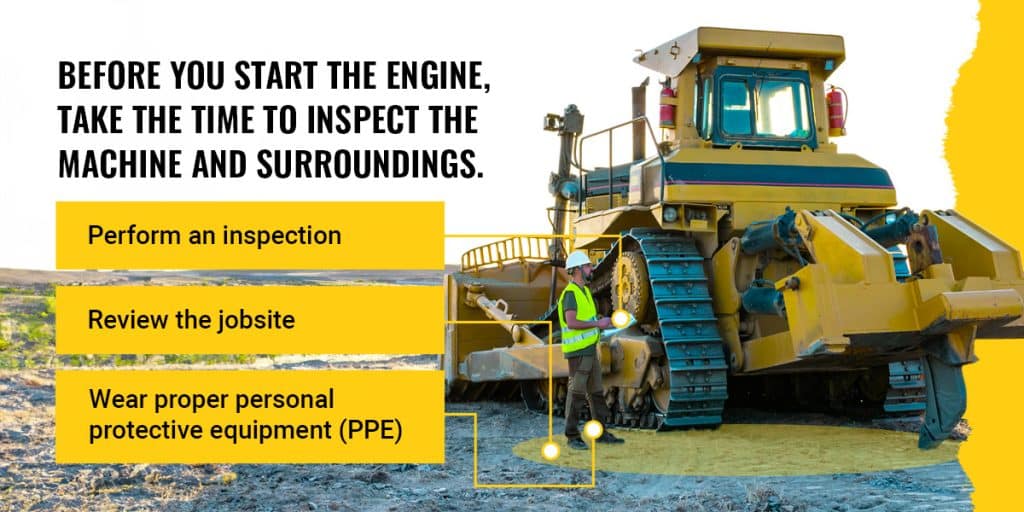
Before you start the engine, take the time to inspect the machine and surroundings. Here are some steps to achieve this process:
Once the machine is running, staying alert and following best practices is essential. Below are recommendations to keep yourself and others safe:
Proper shutdown procedures can extend the longevity of your equipment and keep you safe. Here’s what to do at the end of a shift:
Here’s how to undertake troubleshooting and prevent future issues.
Before jumping into repairs, confirm that there is an actual problem with the equipment. You can do this by:
Once you’ve confirmed a problem, the next step is to identify and resolve the underlying issue. Follow these steps:
After determining the cause, take appropriate corrective actions to resolve the issue, such as repairing or replacing parts or adjusting settings. The troubleshooter should use the equipment’s manual or troubleshooting guide to perform repairs correctly. Use high-quality replacement parts and follow proper installation procedures.
After making repairs or adjustments, test the equipment to confirm the problem is corrected. Operate the machine under normal conditions and monitor for any lingering issues or warning signs. Have the person who reported the issue verify the machine is functioning as expected.
Once you’ve fixed the problem, focus on preventing similar issues from arising. Prevention requires a combination of regular maintenance, operator training and the use of advanced tools. Document the issue, its root cause and the corrective actions taken. This documentation helps identify patterns and improve future troubleshooting measures. Educate operators on proper equipment use and early warning signs of probable issues. Additionally, perform regular inspections and servicing to catch slight problems before they escalate.
Here are some tips for operating heavy machinery commonly used across industries.
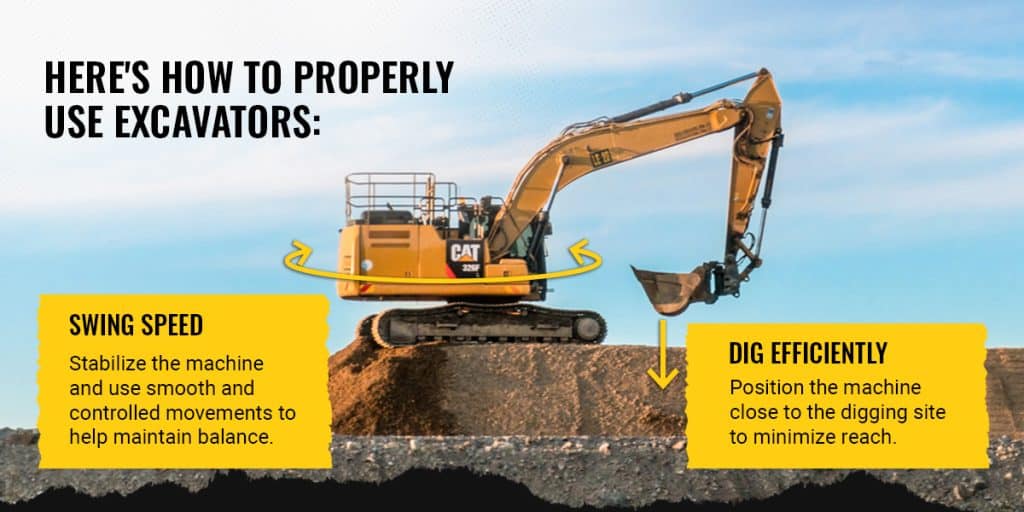
Here’s how to properly use excavators:
Below are some recommendations to safely use backhoe loaders:
Here’s how to make the most of your bulldozer:
Follow these tips to use compactors and rollers:
Some best practices for using skid steer loaders include:
Here are some tips for driving a cold planer:
Blanchard Machinery Company can help you maximize heavy equipment efficiency, jobsite safety and productivity. With over 30 years of industry experience, we have the expertise and resources to help you tackle various heavy machinery and material handling projects. We understand that every project is unique, so we offer an extensive range of equipment from reputable brands designed to handle the toughest challenges.
We’re also here to support you with our comprehensive parts and service solutions to minimize downtime. Our skilled and dedicated sales representatives are always ready to keep your machine in peak condition. Browse our full lineup of machinery today.
